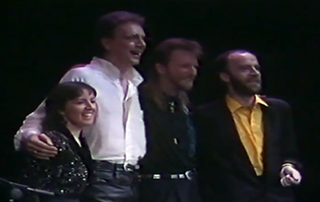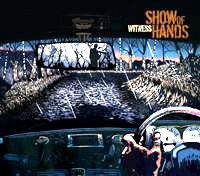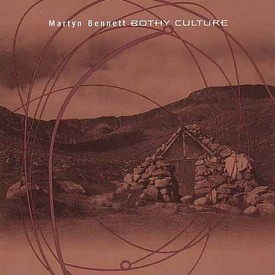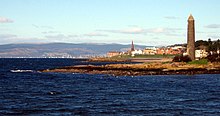
Runrig were a Scottish Celtic rock band formed on the Isle of Skye in 1973. From its inception, the band's line-up included songwriters Rory Macdonald and Calum Macdonald. The line-up during most of the 1980s and 1990s also included Donnie Munro, Malcolm Jones, Iain Bayne, and Pete Wishart. Munro left the band in 1997 to pursue a career in politics and was replaced by Bruce Guthro. Wishart left in 2001 and was replaced by Brian Hurren. The band released fourteen studio albums, with a number of their songs sung in Scottish Gaelic.

Nightnoise was a music ensemble active from 1984 to 1997. Their original blend of Irish traditional music, Celtic music, jazz, and classical chamber music inspired a generation of Irish musicians. They released seven albums on the Windham Hill label.

Covers is the eighth studio album by English acoustic roots duo Show of Hands. The album was released in 2000 by the duo's own label Hands on Music. The album exclusively features cover versions of thirteen songs by the duo, chosen and recorded to reflect the band's contemporary musical influences. As such, the album contains no Steve Knightley compositions. The album was recorded over two days in Chudleigh Town Hall, Devon, with producer Gerald O'Farrell, and features only "straight performances", with its songs being untouched by post-production or techniques such as overdubbing or double tracking, presenting a "live" sound. The album followed their limited edition release Folk Music (1998), which featured the band's versions of traditional folk songs, and was the duo's first array into creating an album of music without Knightley compositions.

The Peatbog Faeries are a largely instrumental Celtic fusion band. Formed in 1991, they are based in Dunvegan on the Isle of Skye, Scotland.
Celtic fusion is an umbrella term for any modern music which incorporates influences considered "Celtic", or Celtic music which incorporates modern music. It is a syncretic musical tradition which borrows freely from the perceived "Celtic" musical traditions of all the Celtic nations, as well as from all styles of popular music, it is thus sometimes associated with the Pan-Celtic movement. Celtic fusion may or may not include authentic traditional music from any one tradition under the Celtic umbrella, but its common characteristic is the inspiration by Celtic identity.

Alasdair Fraser is a Scottish fiddler, composer, performer and recording artist.

Witness is the twelfth studio album by British folk duo Show of Hands. The album was recorded in January 2006 at Presshouse Studio, Colyton, Devon, and was produced by Simon Emmerson and Simon ‘Mass’ Massey from the Afro Celts, who helped to incorporate elements of traditional African, ambient and electronic dance music with the duo's characteristic folk style. It was the band's first album in twelve years to use a rhythm section. Lyrically, the album addresses communal and heritage values, and was described by the duo's lead singer Steve Knightley as a "cinematic style journey of the West Country." The album features unofficial third member Miranda Sykes on ten of its twelve tracks.
The Scots Trad Music Awards or Na Trads were founded in 2003 by Simon Thoumire to celebrate Scotland's traditional music in all its forms and create a high profile opportunity to bring the music and music industry into the spotlight of media and public attention. Nominations are made by the public and in 2019 over 100,000 public votes were expected across 18 categories.

Mellowosity is the debut studio album by Scottish Celtic fusion group Peatbog Faeries, released in 1996 on Greentrax Recordings. After forming as a vocal-based Celtic rock group in 1994, the duo had settled into becoming an instrumental Celtic fusion group by the release of Mellowosity. The album draws from a wide range of musical styles and influences including jazz, reggae, afrobeat, rock, Eastern music, dub and funk, that are mixed in with the band's traditional Scottish folk/Celtic sound featuring fiddles and bagpipes.

Faerie Stories is the second album by Scottish Celtic fusion group Peatbog Faeries, released in 2001 on Greentrax Recordings. The album was reissued in 2008 as a digipack. The album is large departure from the sound of their début album Mellowosity (1996), and sees the band explore a largely electronic sound mixed with their traditional Celtic fusion sound. Influences of electronic genres such as electronica, house, dubtronica and trip hop, in addition to even dub music and African music can be heard on the album fused with traditional Scottish Celtic music.

Croftwork is the fourth album by Scottish Celtic fusion group Peatbog Faeries, recorded in Roag on the Isle of Skye, and released in 2005 on the band's own Peatbog Records label. It was released as the label's second album following on from the band's previous album Welcome to Dun Vegas (2003). They recorded the album at Phat Controller Productions on the band's native Isle of Skye.

Otherworld is an album by Lúnasa that was released 1999 on Green Linnet Records. It is the band's second major release. Although the album displays the band’s traditional Celtic sound, it features techniques and styles unusual to the genre, such as occasional double-tracking recording and occasional instances of instruments that differ from Celtic music, such as cello, electric bass and flügelhorn, leading Allmusic to say the album "yields a sound that is unique to the group and yet clearly in touch with tradition". The album has been described as innovative, with The Georgia Straight citing several tracks' usage of multiple woodwinds as an example.

What Men Deserve To Lose is the fifth album by Scottish Celtic fusion group Peatbog Faeries, recorded at Skye Recording in Roag on the band's native Isle of Skye in 2007, and was commercially released on 16 July 2007 on the band's own label Peatbog Records, though the album had been sold at festivals, and from the band's website, since 22 June 2007. It is the band's first album to feature Graeme Stafford, who brings what the band described as a "dancey" feel to the album.

Bothy Culture is the second studio album by the Scottish Celtic fusion artist Martyn Bennett, released in January 1998 on the Rykodisc label. After winning critical acclaim for his debut album Martyn Bennett (1996), Bothy Culture builds upon that album's mixing of Scottish Celtic music with farther, international folk music styles and contemporary electronic music. The album celebrates and draws upon the music of Bennett's native Gaeldom as well as the music of Islam and Scandinavia, with Bennett finding and emotionally connecting to the similarities between the geographically dispersed styles. It mixes the styles with contemporary electronic music such as breakbeat and drum and bass.

The Isle of Skye, or simply Skye, is the largest and northernmost of the major islands in the Inner Hebrides of Scotland. The island's peninsulas radiate from a mountainous hub dominated by the Cuillin, the rocky slopes of which provide some of the most dramatic mountain scenery in the country. Although Sgitheanach has been suggested to describe a winged shape, no definitive agreement exists as to the name's origins.

Dust is the sixth studio album by the Scottish Celtic fusion band Peatbog Faeries, released on 8 August 2011 on Peatbog Records, although pre-release copies were released on 20 July 2011 through the band's online shop. Following the band's 2008 tour and subsequent live album, the band's fiddle player Adam Sutherland and drummer Iain Copeland left the band, replaced by Peter Tickell and Stu Haikney respectively whose experience helped stir the band in a new direction. The band set to record Dust in 2011 with longtime producer Calum MacLean, beginning work in Orbost and concluding work at Cumbernauld College. Haikney brought experimental fiddle techniques to the band, and similarly experimental production techniques, whilst the entire band experimented with various genres of music including African music, funk, reggae, ambient music and electronic music alongside the band's traditional Celtic fusion sound. The brass sound of previous albums also returned. The album was also an attempt to translate the band's live sound to studio work.

Live is the first live album by Scottish celtic fusion band Peatbog Faeries, released in 2009 by Peatbog Records. It is a compilation album of live tracks from two of the band's concerts in their 2008 tour, and is the band's first album to have been released in a digipak.

Blackhouse is the seventh studio album by Scottish celtic fusion band Peatbog Faeries, released in May 2015 by the band's label Peatbog Records. After recording their acclaimed album Dust (2011), the band played live for the following few years, during which time fiddler Peter Tickell left the band, to be replaced by Ross Couper. As the band had not recorded an album for some years, they returned to record Blackhouse mainly in a cottage in Kilchoan, Ardnamurchan during 2014, although recording continued into 2015. Their first album with Touper, and their first without a brass section since Welcome to Dun Vegas (2003), Blackhouse was produced by Calum MacLean and displays a very eclectic array of genres, fusing the band's Scottish celtic roots with genres such as jazz, funk, reggae, dance and house.

Skye Live Festival is an annual two-day music festival taking place at The Lump, the traditional home of the Skye Highland Games, in Portree on the Isle of Skye in Scotland.

Zoë Bestel is a Scottish singer-songwriter, who describes her music as Nu-Folk. She started learning the Ukulele in 2011 and released her first EP in 2012. Bestel has released two albums, been nominated for the Scottish Alternative Music Awards under the Best Acoustic category and supported artists such as Nathan Connolly of Snow Patrol, Emily Smith, The Paul McKenna Band, The Peatbog Faeries, Erin Rae, Chris Wood, Paul Brady, Steve Tilston and Bella Hardy.




















